falconmod
jgeratic
John, that is interesting you masked both top colours individually. Was that to cut down on paint layers, or to get those lighter streaks in between the main colours?
regards,
Jack
the lighter shades between the two colors was a mistake on my part, I used poster sticky stuff (the green stuff) for the masks so that I would get a thin feathered edge between them. I apparently didn't pull the sticky tack back far enough, I'll have to go over it again to get rid of the line between them.
I think in retrospec I should have sprayed the lightest color first without the masks then put them on and sprayed the dark color. not sure what I was thinking.
John
"And now for something completely different"
I used to hate soft-edged camo because of what I thought was the need to do careful masking, but now it's the opposite, and I hate hard-edged camo.
For the soft-edged stuff, I can't emphasize enough how glad I am that I took the time to practice with the right tools to get to the point where I can freehand it. When I first saw people doing it, I thought "Nope. No way. Way too hard," but once I got past the fear and tried it, it took some getting used to, but it's the best way to go, IMO.
I use a Sotar 20/20 with a 0.2mm nozzle, and my paint mixes are as follows (I mix all of them with Mr. Levelling Thinner, but the same ratios are good with Tamiya Lacquer Thinner, in my experience):
Model Master Enamels: 2:1 thinner to paint
Gunze Mr. Color: 4:1 thinner to paint
Tamiya acrylics: 2:1 or 3:1 thinner to paint
Mr. Paint: I rarely thin, as it's pre-thinned, but sometimes I do for amist coat
I shoot at 15PSI for the up-close stuff, sometimes dropping it to 10PSI if I need to be really close. The key is to thin the paint to a point where it almost runs, but not quite.
The following planes are 1/48.
This is Kitty Hawk's Super Etendard painted with Model Master enamels. I shot it tighter (closer to the model, about 1/2 inch to 1 inch and about 18PSI) since I wanted a sharper line.
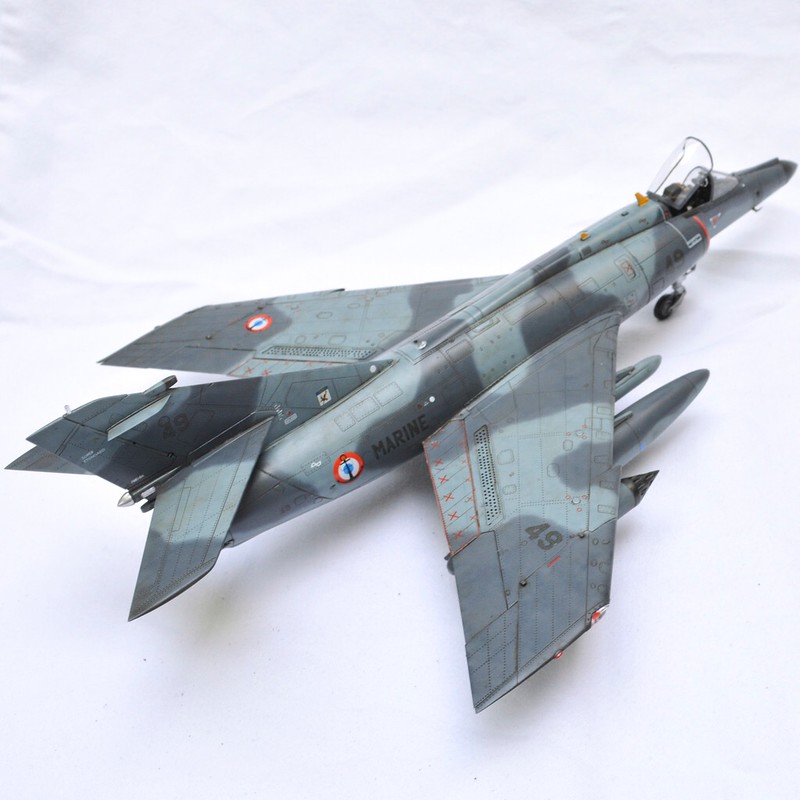
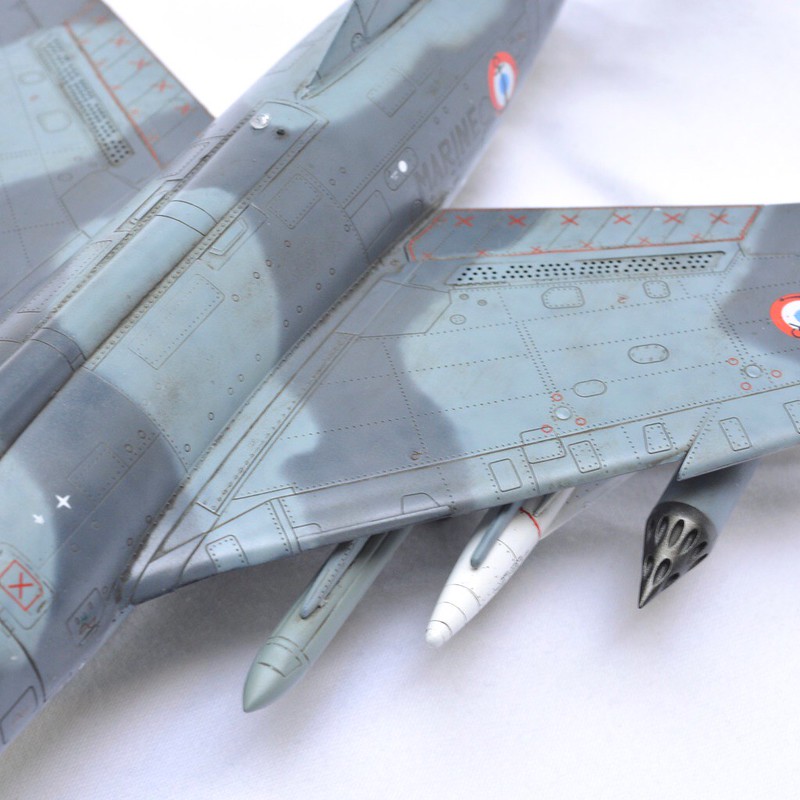 The key to getting a sharp-ish line is to angle the paint flow inward to the color you're painting so any overspray carries over to the part where it's going to be that color anyway.
The key to getting a sharp-ish line is to angle the paint flow inward to the color you're painting so any overspray carries over to the part where it's going to be that color anyway.
For this Hobbycraft P-36, I wanted a more feathered edge, so I pulled the spraying back a bit, and held it at about a 90-degree angle to the surface to get a softer edge.
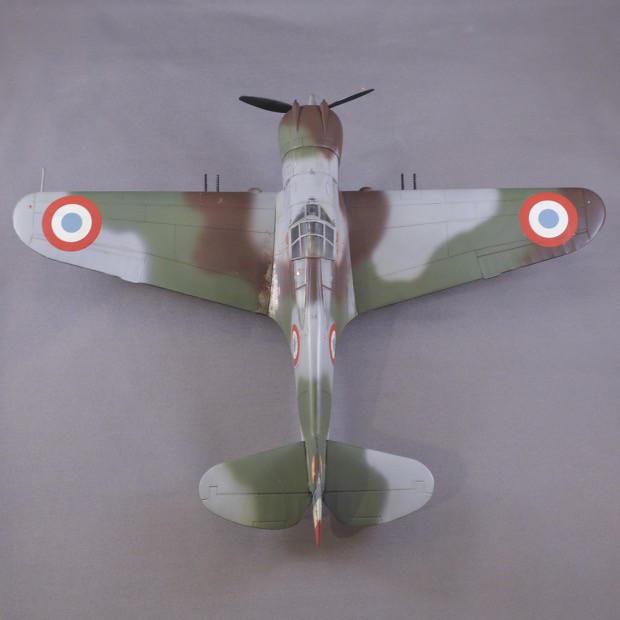
For Tamiya's P-47 Razorback, I had to use tape on the cowl rudder and invasion stripes (though you can make a good argument for NOT making the stripes hard-edged) but then free-handed the rest with Tamiya paints.
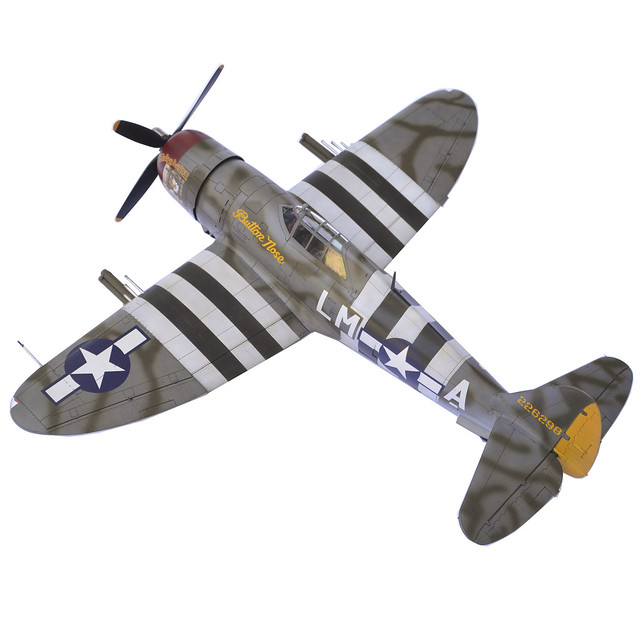
Now, in keeping with this build subject, I'll show my 1/72 Airfix Fw-190 that was kind of the bane of my existence due to the smaller scale.
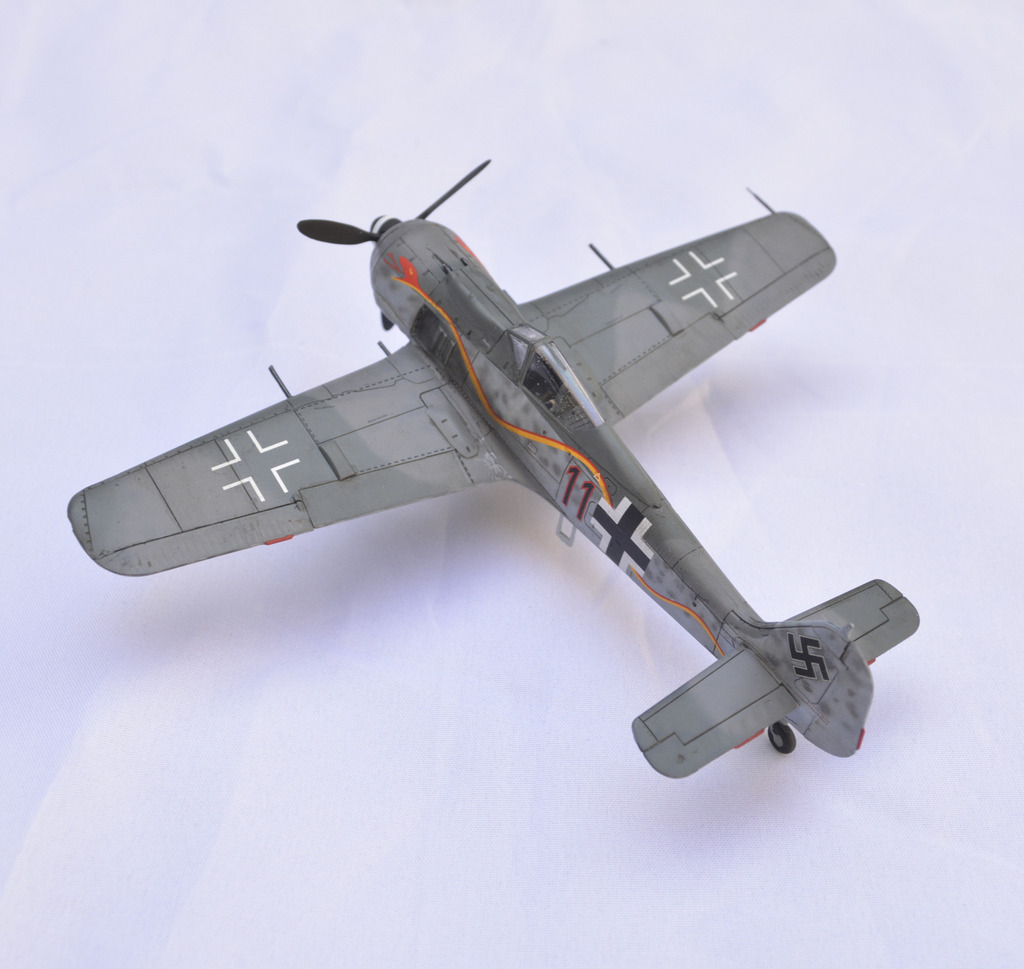

For this one, I used tape for the hard-edged upper/lower fuselage demarcation line, but then freehanded the RLM 74 and 75 where they meet, as well as the mottling. I totally messed up the mottling on the tail and made one spot WAY too big, but the beauty of freehanding soft-edged stuff is that you can just come back with the other color, overspray the error and fix as needed. For the 1/72 mottling, I was at 3.5:1 thinner:paint, 10PSI indicated (so about 8 when actually spraying) and was holding really close to the model.
Hopefully this doesn't come off as my trying to push my way of doing it or seeming like a know-it-all (because I've learned a ton in this thread alone and still have a LONG way to go), but I found that I hated using Blu Tac because I ran into the snag you have with the lighter color, and I found I got inconsistent results because I am not good at pressing the Blu Tac "worms" down consistently, and some of it ends up being hard-edges, while some ends up being soft-edged.
-BD-